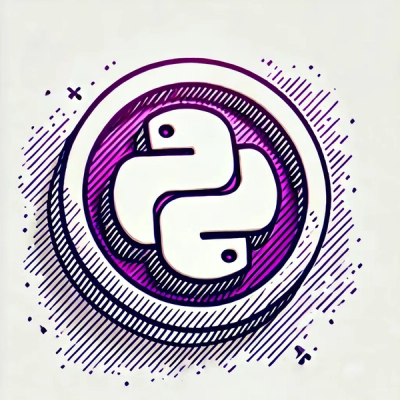
Research
PyPI Package Disguised as Instagram Growth Tool Harvests User Credentials
A deceptive PyPI package posing as an Instagram growth tool collects user credentials and sends them to third-party bot services.
pagination-class
Advanced tools
An ES6 class for pagination functionality and rendering.
This example shows how to create a pagination instance. To integrate pagination with application logic, simply bind functionality to instance events.
import Pagination from 'pagination-class'
let pagination = new Pagination('#pagination-container', 50, 1)
pagination.on('goto:post', () => {
// Application logic for navigation
})
<html>
<head>
<title>Pagination class example</title>
<meta charset="utf-8" />
</head>
<body>
<h1>Pagination class example</h1>
<div id="pagination-container"></div>
</body>
</html>
containerContainer to insert pagination elements into - can provide either an HTML node or a string to be used in document.querySelector().
pagesTotal number of pages to render.
currentCurrent page.
optionsPagination instance options.
listClass: Class added to <ul> elementsummaryClass: Class added to pagination summary container elementsummaryCurrentClass: Class added to the <span> element containing the current pagesummaryOfClass: Class added to the <span> element containing the 'of' text, defined in the summaryOfText optionsummaryTotalClass: Class added to the <span> element containing the total number of pagesitemClass: Class added to page number elementsseparatorClass: Class added to separator elements, between truncated points in the listprevClass: Class added to previous elementnextClass: Class added to next elementactiveClass: Class added to active page elementdisabledClass: Class added to disabled elementsshowSummary: Enable summary displayshowPages: Enable pages displayshowPrevNext: Enable previous and next displaytruncateList: Enable truncated page list - if false, list will contain every pageadjacentNumbers: Number of pages to appear on either side of the current pageouterNumbers: Number of pages to appear on the outside of the truncated list - lists the first x pages and last x pages, depending where truncatedsummaryOfText: Text to display in the summary, between the current page and total pagesprevText: Text to display in the previous elementnextText: Text to display in the next elementseparatorText: Text to display in the page separator element{
listClass: 'pagination-list',
summaryClass: 'pagination-summary',
summaryCurrentClass: 'pagination-summary-current',
summaryOfClass: 'pagination-summary-text',
summaryTotalClass: 'pagination-summary-total',
itemClass: 'pagination-item',
separatorClass: 'pagination-separator',
prevClass: 'pagination-prev',
nextClass: 'pagination-next',
activeClass: 'active',
disabledClass: 'disabled',
showSummary: true,
showPages: true,
showPrevNext: true,
truncateList: true,
adjacentNumbers: 6,
outerNumbers: 2,
summaryOfText: 'of',
prevText: 'Previous',
nextText: 'Next',
separatorText: '…'
}
Public control methods to be accessed on an instance are as follows:
Go to page specified by page parameter.
Optionally, you can pass a direction parameter to determine if it is moving forwards or backwards - useful for integration with sliding animations.
Go to previous page - calls goTo.
Go to next page - calls goTo.
The class triggers the following events:
Triggered before a page element is clicked.
{
page: page // New page to set
}
Triggered after a page element is clicked.
{
page: page // New page set
}
Triggered before previous element is clicked.
{
page: page // Current page before being set
}
Triggered after previous element is clicked.
{
page: page // Current page after being set
}
Triggered before next element is clicked.
{
page: page // Current page before being set
}
Triggered after next element is clicked.
{
page: page // Current page after being set
}
Triggered before new page is set.
{
newPage: newPage, // New page to set
direction: direction // Navigation direction
}
Triggered after new page is set.
{
newPage: newPage, // New page just set
previousPage: previousPage, // Previous page before being set
direction: direction // Navigation direction
}
Triggered before navigating to previous page.
Triggered after navigating to previous page.
Triggered before navigating to next page.
Triggered after navigating to next page.
FAQs
An ES6 class for pagination functionality and rendering.
The npm package pagination-class receives a total of 581 weekly downloads. As such, pagination-class popularity was classified as not popular.
We found that pagination-class demonstrated a not healthy version release cadence and project activity because the last version was released a year ago. It has 1 open source maintainer collaborating on the project.
Did you know?

Socket for GitHub automatically highlights issues in each pull request and monitors the health of all your open source dependencies. Discover the contents of your packages and block harmful activity before you install or update your dependencies.

Research
A deceptive PyPI package posing as an Instagram growth tool collects user credentials and sends them to third-party bot services.

Product
Socket now supports pylock.toml, enabling secure, reproducible Python builds with advanced scanning and full alignment with PEP 751's new standard.

Security News
Research
Socket uncovered two npm packages that register hidden HTTP endpoints to delete all files on command.